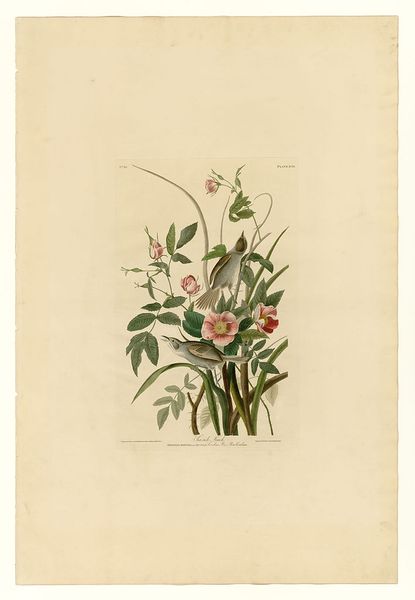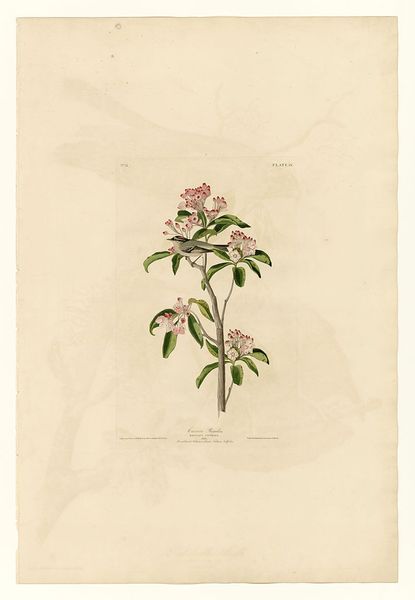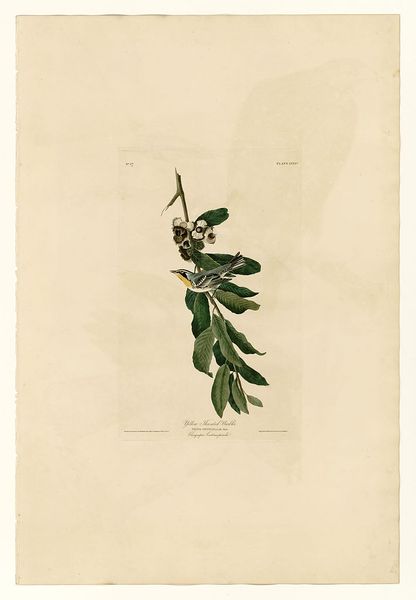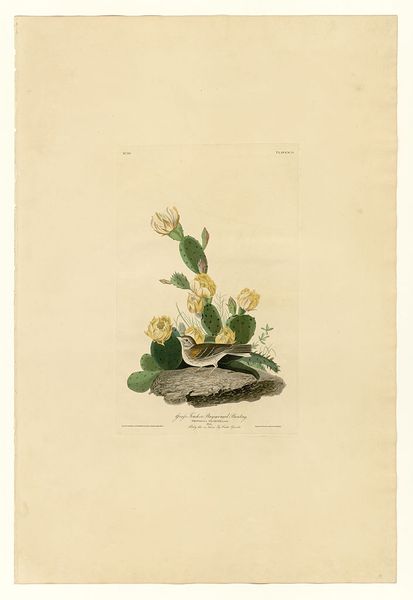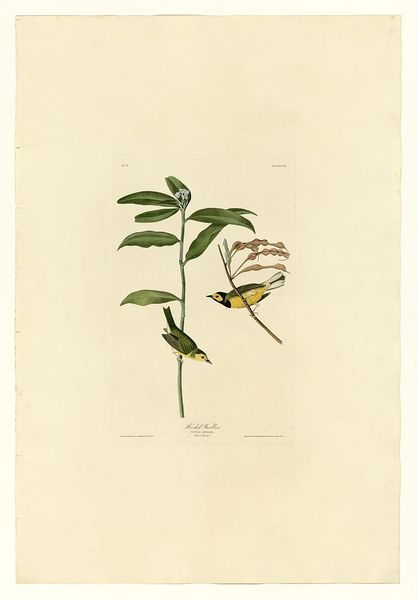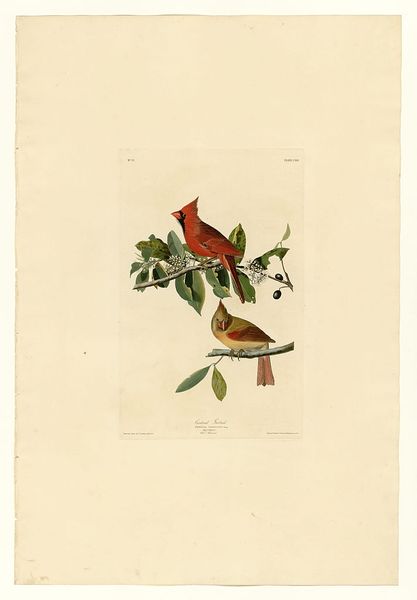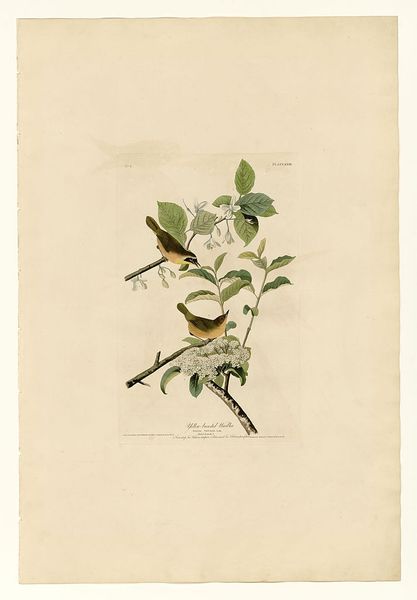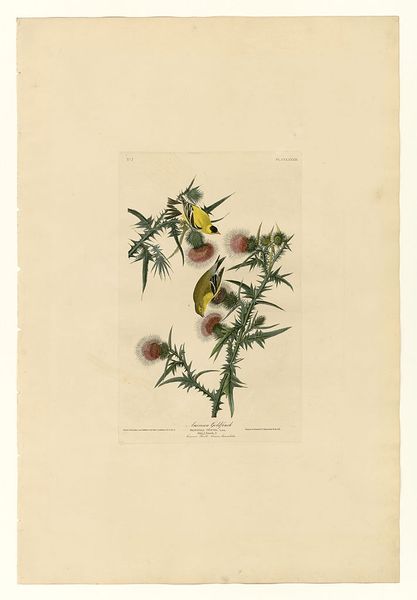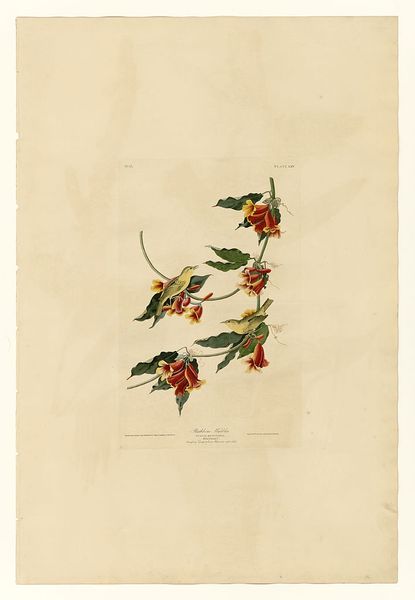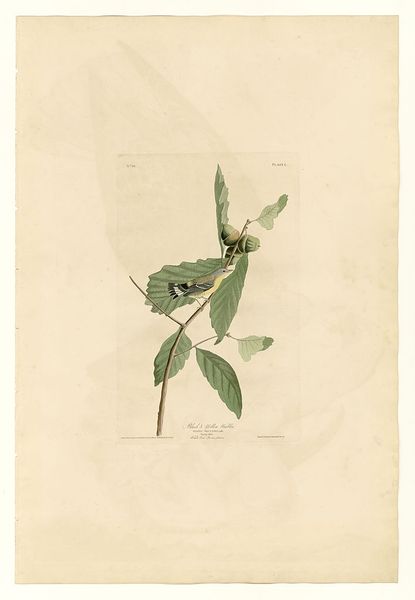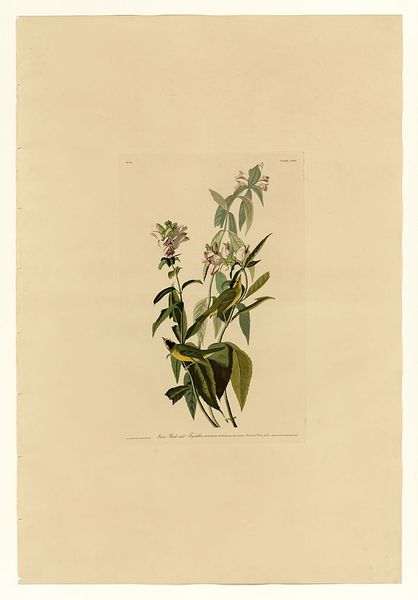
painting, print, watercolor
#
portrait
#
painting
# print
#
impressionism
#
landscape
#
flower
#
watercolor
#
plant
#
watercolour bleed
#
watercolour illustration
#
botany
#
nature
#
watercolor
Copyright: Public domain
Editor: Here we have "Plate 70 Henslow's Bunting" by John James Audubon, a watercolor print depicting a small bird perched amidst foliage and flowers. It feels like a carefully constructed snapshot of a moment in nature, but also rather staged. What social narratives might have been in play when a piece like this was made? Curator: That’s a great observation. Audubon’s work gained popularity during a period of intense scientific exploration and expansion in the Americas. Consider how these images, seemingly objective depictions of wildlife, also functioned within a specific social and political landscape. What do you think Audubon was communicating about the relationship between humans and nature during this time? Editor: Perhaps there's a desire to catalogue and control nature, fueled by colonial ambitions. These birds and plants become specimens, possessions even. Does the popularity of this image speak to that attitude? Curator: Precisely. Think about who consumed these images. They were often wealthy landowners, scientists, and members of the emerging middle class. Audubon's prints were luxury items, reinforcing a sense of ownership and access to the natural world. Do you think the artistic style contributed to this sense of control? Editor: Well, the detail is remarkable, almost hyper-realistic in a way that feels very precise and controlled. Yet there's a looseness, almost a romantic sensibility, particularly in the background. Is it a blend of scientific observation and aesthetic romanticism to appeal to those specific groups? Curator: Exactly! And remember, Audubon wasn't just an artist; he was also a showman and entrepreneur. He carefully crafted his public image to align with prevailing societal values. Looking at the way Audubon framed the bird within an elegant and refined landscape, what message do you think he wanted to convey? Editor: That nature is knowable, beautiful, and ultimately, there for the taking. It makes me rethink how seemingly harmless images can reinforce specific power structures. Thank you; I have new avenues of inquiry now. Curator: And I find that your questions prompted me to reconsider how context always colors scientific visual representations.
Comments
No comments
Be the first to comment and join the conversation on the ultimate creative platform.

